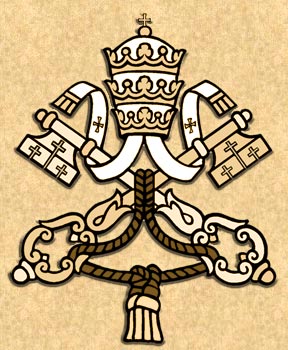During this morning's general audience, held in the Paul VI Hall in the presence of 9,000 faithful, Benedict XVI focused his catechesis on St. Catherine of Genoa (1447-1510), author of two books: "Treatise on Purgatory" and "Dialogues on the Soul and the Body".
Catherine received a good Christian education in the home before marrying at the age of sixteen, although her married life was not an easy one. At first she led a worldly existence which caused her a profound sense of emptiness and bitterness however, following a unique spiritual experience which made her aware of her own misery and defects and, at the same time, of the goodness of God, she decided to change her life and to begin a journey of purification and mystical communion with the Lord. "The place of her ascent to the mystical heights was the hospital of Pammatone, the largest in Genoa, of which she was director", said the Pope.
"The period between her conversion and her death was not marked by extraordinary events", said the Holy Father, "but two elements characterised her entire life: on the one hand, mystical experience, profound union with God and, ... on the other, service to others, especially the most needy and abandoned".
"We must never forget", he went on, "that the more we love God and remain constant in our prayers, the more we will truly manage to love those around us, because in each individual we will see the face of the Lord, Who loves without limit or distinction".
Benedict XVI then went on to refer to the works of the saint, recalling how, "in her mystical experiences, Catherine never received specific revelations on Purgatory or on the souls being purified there". She did not see Purgatory "as a place of transit in the depths of the earth: it is not an exterior fire, but an interior fire". She did not use the hereafter as a basis "to recount the torments of purgatory and then show the way to purification and conversion; rather, she began from the interior experience of man on his journey towards eternity".
Thus, for Catherine, "the soul is aware of God's immense love and perfect justice; as a consequence, it suffers for not having responded to that love perfectly, and it is precisely the love of God Himself which purifies the soul from the ravages of sin".
This mystical saint from Genoa used an image typical of Dionysus the Areopagite: the thread of gold linking the human heart to God, said the Pope. "In this way the heart of man is inundated with the love of God, which becomes his only guide, the only driving force in his life. This situation of elevation towards God and abandonment to His will, as expressed in the image of the thread, is used by Catherine to express the action of divine light on the souls in Purgatory, a light which purifies and raises them towards the splendour of the dazzling rays of God".
"In their experience of union with God, saints achieve so profound an 'understanding' of the divine mysteries, in which love and knowledge almost become one, that they can even help theologians in their studies", said the Pope.
"St. Catherine's life teaches us that the more we love God and enter into intimate contact with Him through prayer, the more He makes Himself known and enflames our hearts with His love. By writing about Purgatory, the saint reminds us of a fundamental truth of the faith which becomes an invitation for us to pray for the dead, that they may achieve the blessed vision of God in the communion of the saints".
And Benedict XVI concluded: "The saint's lifelong humble, faithful and generous service in the hospital of Pammatone is a shining example of charity towards everyone, and a special encouragement for women who make a fundamental contribution to society and the Church with their precious efforts, enriched by their sensitivity and the care they show towards the poorest and those most in need".
Visiting Holy Rosary Cathedral in Toledo
3 weeks ago









No comments:
Post a Comment